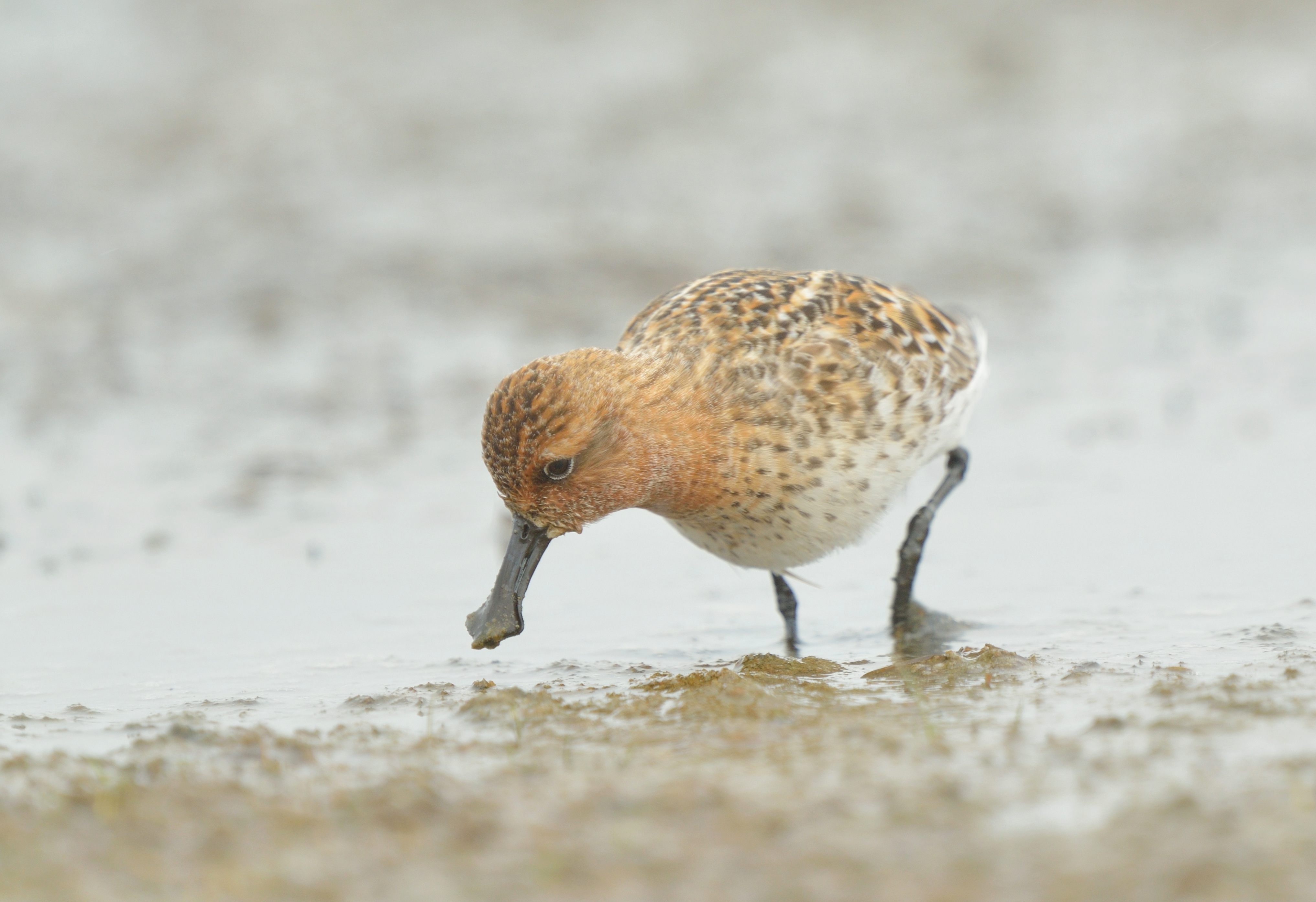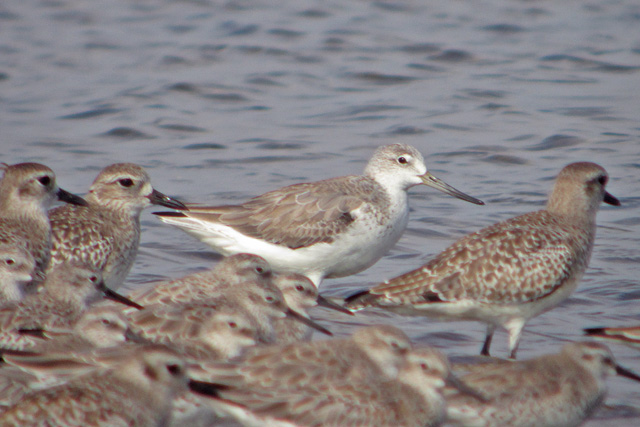An international survey team found a sensational record total of 140 Spoon-billed Sandpiper and 1,200 Nordmann's Greenshank, two of the rarest and most threatened birds of the world, in Rudong Jinagsu Province on the Chinese coastline. The survey, conducted by the conservation network 'SBS in China' on October 15th-19th supported by an international team of the Spoon-billed Sandpiper (SBS) Task Force, confirmed the outstanding international conservation importance of intertidal wetlands along the 120km of coastline between Dongtai and Rudong.
"We believe the entire adult populations of both Spoon-billed Sandpiper and Nordmannn's Greenshank are staging at the highly productive intertidal flats on the coast of Rudong" stated Dr Nigel Clark from the British Trust for Ornithology (BTO) in the UK, highlighting its vital importance for the survival of both species. Representatives of the local and provincial government announced the creation of a special wetland reserve for Spoon-billed Sandpipers during a workshop following the survey. "This is a historic moment in the conservation of the species. For the first time since our efforts to conserve the species began in 2000, we can realistically hope to save the species from extinction" concluded Dr Christoph Zöckler, coordinator of the SBS Task Force.

Spoon-billed Sandpiper (Photo: Baz Scampion)
Much coastal wetland along the East Asian-Australasian Flyway has already been lost to development, driving the decline of birds such as the Spoon-billed Sandpiper and Nordmann's Greenshank, which rely on them for safety and food along their migration. Many of the most important intertidal wetlands along the Jiangsu coast are threatened by continuing reclamation for agricultural and industrial development. However, local and provincial authorities now recognise the international importance of the area as shown by their announcement of the creation of a new protected area for Spoon-billed Sandpiper. This, together with two shellfish reserves which overlap with most of the wader feeding areas give the first protection to this vital link in the chain of wetlands that these two species depend on to get from their breeding areas in the Arctic to the wintering sites in tropical SE Asia. It is hoped that these fledgling reserves will eventually achieve protection at provincial and national level.
"Our surveys confirm the intertidal wetlands of Rudong as the most important remaining stopover site for the Spoon-billed Sandpiper during its entire 8,000km long migration route. Protecting these internationally important intertidal wetlands is vital for the sandpiper's survival, and also for the maintenance of the shellfishery and other vital services provided by tidal-flats." stated Jing Li, co-ordinator of SBS in China.

Nordmann's Greenshank (Photo: Richard Bonser)
As part of this work, Prof. Chang Qing, of Nanjing Normal University, who advises the Forest Department of the Jiangsu Province on environmental issues stated: "We now hope to create a working group of local government and NGOs that involves all stakeholders in the future planning of wetland reserves and their management."
"I am very pleased to see so many Spoon-billed Sandpiper here in Rudong" concluded Dr Evgeny Syroechkovskiy of the Russian Ministry for Natural Resources, SBS Task Force Chair. He added: "I will encourage my ministry to include both, Spoon-billed Sandpiper and Nordmann's Greenshank, which breed exclusively in Russia, into the recently signed bilateral agreement on migratory bird conservation between China and Russia."



